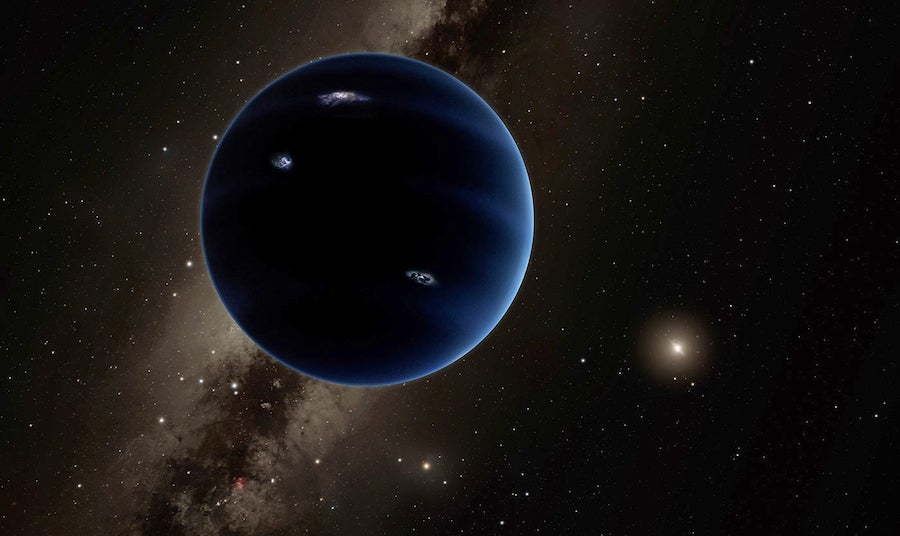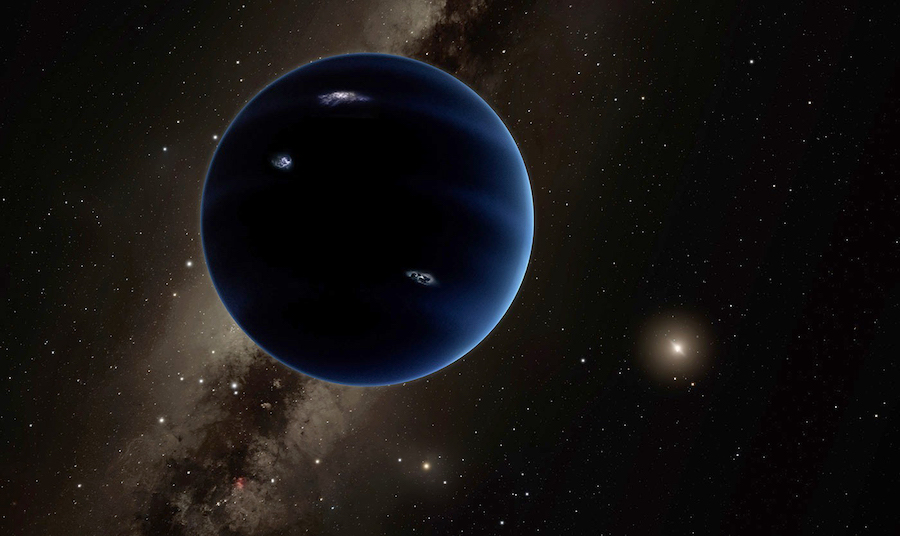Considering its distance, the uncertainty in its location, and the breadth of its orbital path, this hypothetical planet is exceedingly difficult to detect.

This artist’s concept depicts the distant, hypothetical, Neptune-sized Planet X in our solar system. Although astronomers are searching, catching a glimpse of this planet — if it exists — is challenging, even with powerful telescopes such as JWST. Credit: Caltech/R. Hurt (IPAC)
If the James Webb Space Telescope can see galaxies billions of light-years away, why can’t it find the proposed Planet X somewhere in our solar system beyond Pluto?
Terry Murray
Cincinnati, Ohio
Your excellent question demonstrates that at times celestial reality can defy terrestrial intuition.
One would think that astronomical objects within our solar system would be more readily observable than galaxies billions of light-years away. However, in astronomy, apparent brightness is more important than proximity. For instance, the Andromeda Galaxy (magnitude 3.4) appears approximately 12,000 times brighter in our sky than Pluto at its maximum brightness (magnitude 13.6) despite the former’s 2.5-million-light-year distance. All the same, one can observe Pluto with a sufficiently powerful telescope because its location is precisely known at any given time.
Finding Planet X, assuming it exists, is far more complicated. In January 2016, Caltech astronomers Konstantin Batygin and Mike Brown published a paper in The Astronomical Journal in which they cited evidence for a giant planet that might be five to 10 times more massive than Earth, with an average distance between 400 and 800 AU from the Sun. Pluto’s average heliocentric distance is 39 AU. Even if Planet X is truly a giant and reflects a lot of light, it will appear quite faint because the intensity of light diminishes with the square of the distance. At the minimum 400-AU distance, the Sun will appear at least 100 times fainter than it does at 39 AU. Any reflected light from Planet X will appear even fainter after traversing the solar system a second time to reach Earth.
Considering its distance, the uncertainty in its location, and the breadth of its orbital path, this planet would be exceedingly difficult to detect in conventional sky searches. And astronomers will not only have to detect Planet X, but also distinguish it from background stars by virtue of the motion it exhibits relative to them. Recall that Clyde Tombaugh (1906–1997) detected Pluto after a year of meticulous searching with a blink comparator, a machine that compares two different images of the sky to look for differences. The search field for Planet X is broader and, owing to its greater distance and commensurately slower orbital motion, its changes in position relative to the background will be smaller and more difficult to detect, even with current technology.
Edward Herrick-Gleason
Planetarium Director, Southworth Planetarium,
University of Southern Maine, Portland, Maine

